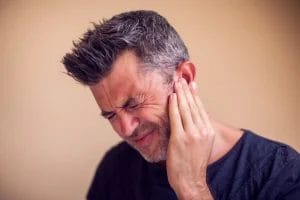Occipital, Geniculate & Glossopharyngeal Neuralgias
 While trigeminal neuralgia is the most common of the facial pain diagnoses, others cause facial pain. Understanding the various pain sensations and how they arise can help patients have more effective conversations with healthcare providers and explore different treatment options to address their symptoms best.
While trigeminal neuralgia is the most common of the facial pain diagnoses, others cause facial pain. Understanding the various pain sensations and how they arise can help patients have more effective conversations with healthcare providers and explore different treatment options to address their symptoms best.
Of the conditions explored in this blog, occipital neuralgia is the most prevalent, whereas geniculate and glossopharyngeal neuralgia are rare facial pain disorders. All three should be differentiated from trigeminal neuralgia. However, the presence of one diagnosis does not exclude the possibility of another, making it essential to discuss all your symptoms with your healthcare provider to help determine the best pain management approach.
Occipital Neuralgia (ON)
The occipital nerve is not one of the cranial nerves, but rather a spinal nerve. However, it affects the head and face, which is why it is included in this blog about facial pain.
The occipital nerve begins at the C2-C3 level, then reaches up behind the ear, goes above the hairline, and then runs throughout the scalp. There are three occipital nerves on each side: the greater occipital nerve, the third occipital nerve, and the lesser occipital nerve.
What does it feel like?
Ever wondered what occipital neuralgia feels like? The classic presentation is severe, sharp, shock-like, piercing, and/or throbbing pain in the upper neck, back of the head, and/or behind the ear. There may also be a dull aching pain between the shooting pain attacks.
What treatments are there?
These typically begin with ice/warm packs, then progress to anti-inflammatories and muscle relaxants. The next steps would be medications commonly used for neuropathic pain, such as anticonvulsants and antidepressants, followed by nerve blocks, Botox, and radiofrequency treatments. Surgical intervention is considered for refractory and non-responsive patients who require pain relief. There are three primary surgical interventions: decompression, neuromodulation, and neurodestruction.
What are some of the triggers?
- Hair brushing
- Shampoo
- Tight neck muscles
NOTE: All other diagnoses should be ruled out before giving this diagnosis. Your healthcare provider may first test for Chiari malformation, osteoarthritis of the upper cervical spine, compression of the greater and/or lesser occipital nerves, or C2 and/or C3 nerve roots from degenerative cervical spine changes, cervical disc disease, tumors affecting the C2 and C3 nerve roots, blood vessel inflammation, infection, and other potential causes.
Geniculate Neuralgia (GN)
 Geniculate differs from trigeminal neuralgia in that it doesn’t stem from a nerve, but rather a ganglion. The nervus intermedius is located between the facial nerve (cranial nerve VII) and the vestibulocochlear nerve (cranial nerve VIII).
Geniculate differs from trigeminal neuralgia in that it doesn’t stem from a nerve, but rather a ganglion. The nervus intermedius is located between the facial nerve (cranial nerve VII) and the vestibulocochlear nerve (cranial nerve VIII).
What does it feel like?
The classic presentation of geniculate neuralgia is severe, sharp, and deep ear pain. It is sometimes described as an “ice pick to the ear”. An atypical presentation would be constant, dull, and burning pain.
What treatments are there?
It is essential to work closely with your healthcare provider, as certain medications and treatments have been shown to be effective in helping patients manage their pain more effectively. Sodium channel blockers are most commonly tried first, and some patients find success with MVD (microvascular decompression surgery).
What are some of the triggers?
- Stimulation of the ear canal
- Swallowing
- Talking
- Other facial nerve pain
NOTE: All other diagnoses should be ruled out before giving this diagnosis. Your healthcare provider will conduct a thorough evaluation of the eyes, ears, throat, nose, and teeth, as well as evaluate patients for temporomandibular joint dysfunction and multiple sclerosis (if the symptoms develop before age 50).
Glossopharyngeal Neuralgia (GPN)
 The glossopharyngeal nerve is the 9th cranial nerve. It is responsible for sensations in the tongue and throat, as well as movements such as swallowing and the gag reflex. “Glosso-” means related to the tongue; “pharyngeal” means related to the pharynx, or throat.
The glossopharyngeal nerve is the 9th cranial nerve. It is responsible for sensations in the tongue and throat, as well as movements such as swallowing and the gag reflex. “Glosso-” means related to the tongue; “pharyngeal” means related to the pharynx, or throat.
What does it feel like?
It is characterized by severe, sharp, and recurrent pain in the ear, base of the tongue, tonsils, or beneath the angle of the jaw. It may cause pain to shoot from the throat to the ear. An atypical presentation would be constant dull and burning pain in the same areas.
What treatments are there?
It is essential to work closely with your healthcare provider, as certain medications and treatments have proven effective in helping patients manage their condition more effectively. Sodium channel blockers are typically the first-line treatment. Some patients find success with MVD (microvascular decompression surgery) or the gamma knife. GPN nerve blocks can also be performed, and B12 is beneficial for some patients.
What are some of the triggers?
- Swallowing
- Chewing
- Talking
- Sneezing
- Cold Liquids
- Clearing the throat
- Touching the area
- Sweet, spicy, or sour foods
NOTE: It is crucial to exclude conditions such as trigeminal neuralgia, inflammation, growths, and multiple sclerosis, all of which can cause similar pain.